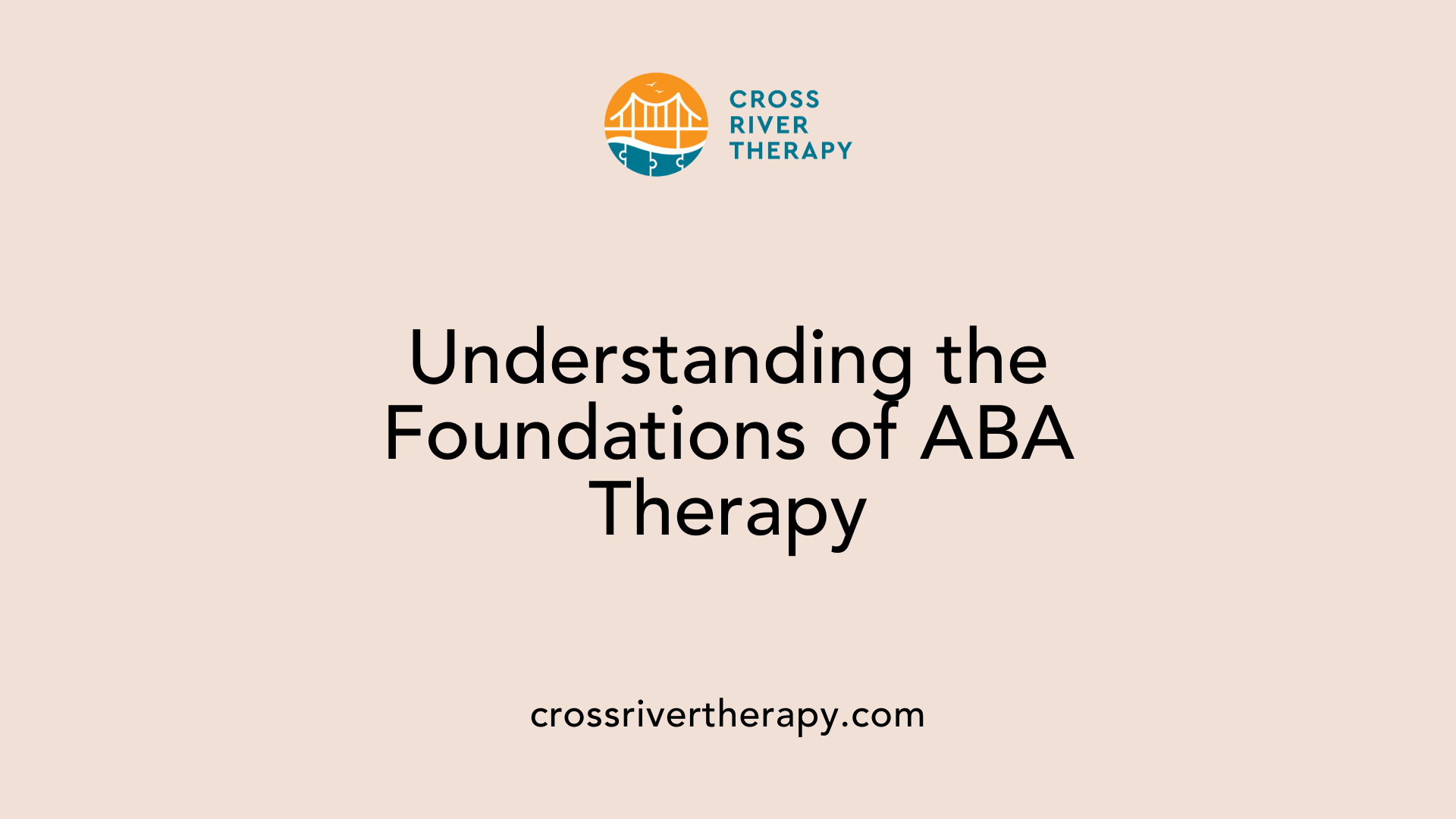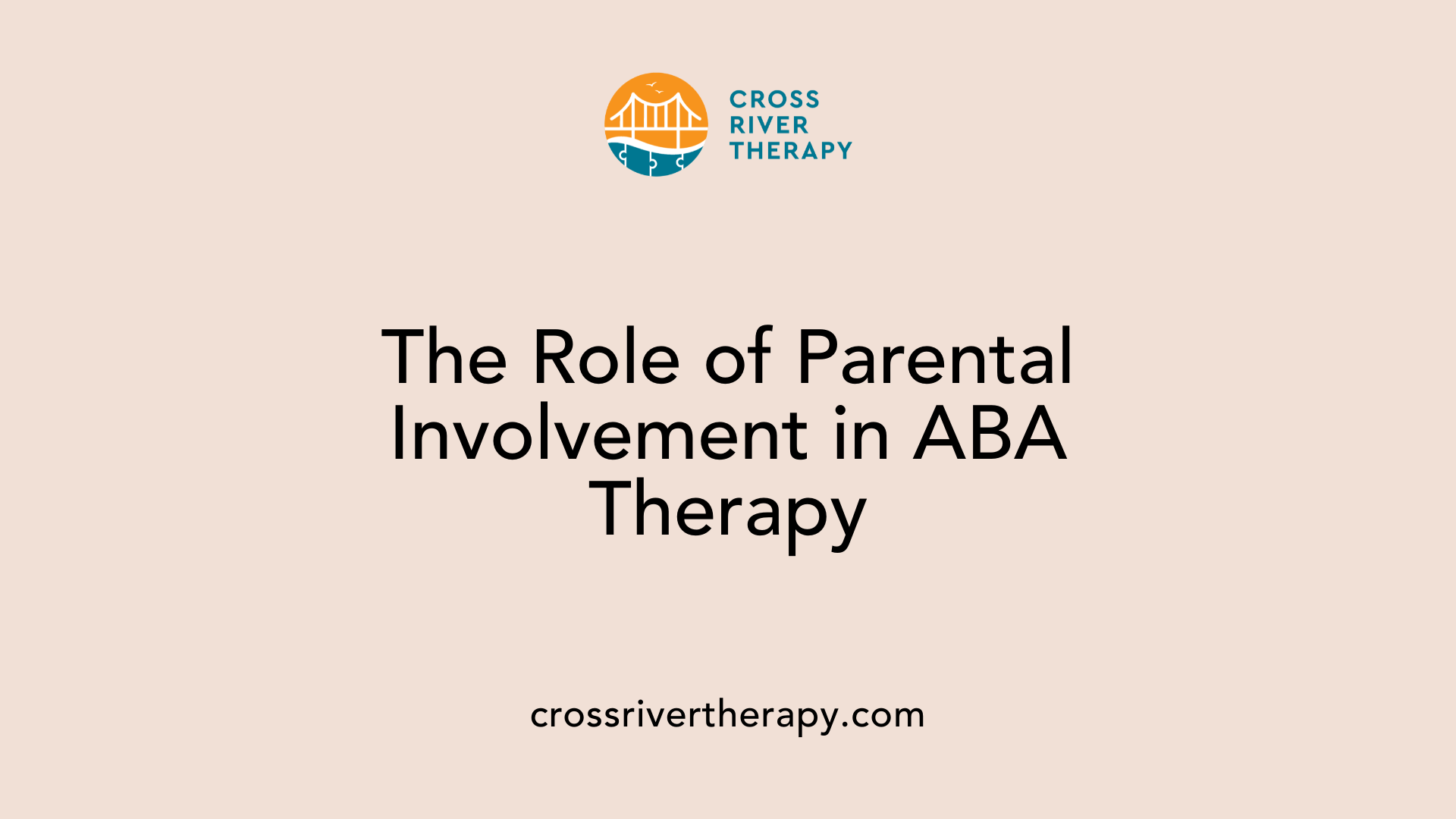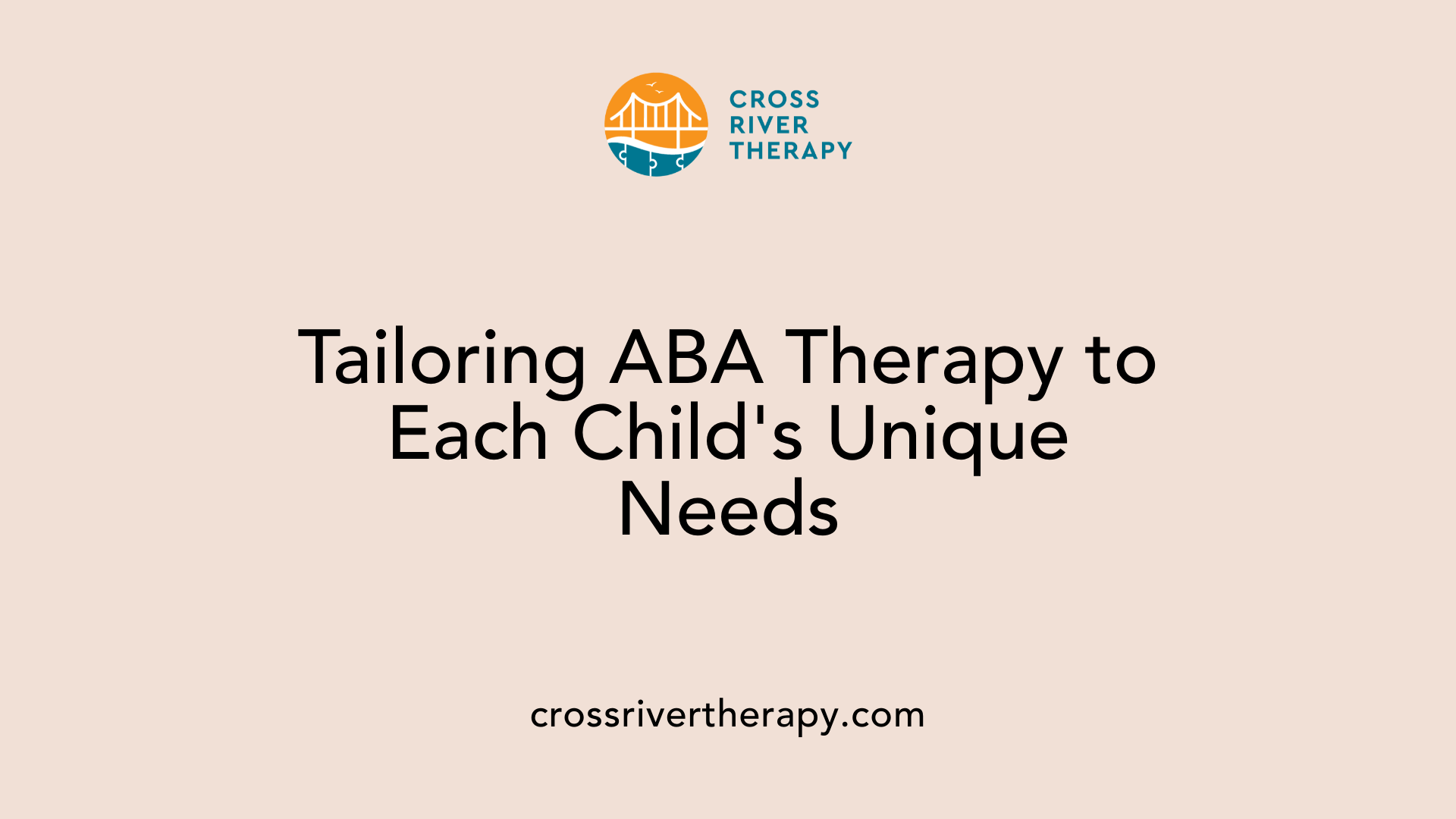The Benefits of One-on-One ABA Therapy for Autism
Exploring the Power of Personalized Autism Interventions
Introduction to One-on-One ABA Therapy
One-on-one Applied Behavior Analysis (ABA) therapy is a specialized intervention for children with Autism Spectrum Disorder (ASD) that offers a highly individualized approach to development and learning. The intention behind one-on-one ABA therapy is to tailor treatment to the unique needs and strengths of each child, enhancing their abilities in communication, behavior, and social interactions. This article delves into the myriad benefits of one-on-one ABA therapy, backed by robust evidence and research findings, to help parents and caregivers understand its impact on their children's lives.
Understanding ABA Therapy

What is ABA therapy?
ABA therapy, or Applied Behavior Analysis, is a scientifically-based intervention aimed at improving specific skills and behaviors in individuals, particularly children with autism. Since the 1960s, it has been widely employed to enhance various domains such as communication, social skills, academic performance, and overall quality of life, while decreasing harmful behaviors.
A key component of ABA is positive reinforcement, which encourages desirable behaviors through rewards rather than punishment. Qualified professionals, known as Board Certified Behavior Analysts (BCBAs), design individualized programs following detailed assessments of a person's needs. Research supports ABA as an effective, evidence-based treatment recognized by leading health organizations, emphasizing its adaptability for individuals across the autism spectrum and throughout their lifespan.
Core Principles
The core principles of ABA include:
- Behavior Modification: Focuses on changing specific behaviors through systematic intervention.
- Individualization: Programs are tailored to meet the unique needs, strengths, and interests of each child.
- Data-Driven: Continuous tracking of progress allows for adjustments to therapy based on measurable outcomes.
Role of Positive Reinforcement
Positive reinforcement is crucial in ABA therapy. This strategy involves:
- Rewarding Desired Behaviors: Encourages repeating of positive actions by providing rewards.
- Building New Skills: Engages children in learning through enjoyable activities that promote skill acquisition.
- Enhancing Motivation: Fosters a positive learning environment, making children more likely to engage actively in therapy.
The Gold Standard of Autism Treatment

Why is ABA therapy considered the gold standard for autism treatment?
ABA therapy has earned its reputation as the gold standard for autism treatment due to its robust evidence-based foundation and extensive scientific validation. With over 50 years of research supporting its effectiveness, ABA therapy leverages systematic approaches to teach essential skills and alter challenging behaviors. This ensures meaningful improvements in social interaction, communication, and other daily living activities for individuals with Autism Spectrum Disorder (ASD).
Tailored and Individualized Interventions
One of the standout features of ABA therapy is its individualized approach. Each instruction plan is designed to meet the specific needs, strengths, and interests of the child. Board Certified Behavior Analysts (BCBAs) oversee the implementation of these tailored interventions, which can occur in a variety of environments such as homes, schools, or specialized centers. This flexibility aids in maximizing the therapy's effectiveness.
Parental Involvement
Parental involvement is a cornerstone of ABA therapy. Caregivers are actively engaged in the learning process, receiving training on ABA principles that they can reinforce at home. This consistent application of learned strategies helps create a foundation for long-term success, ensuring that the progress made during therapy is sustained across different settings.
In summary, ABA therapy not only serves children with autism effectively but also empowers families to be an integral part of their child's developmental journey, which is essential for fostering greater independence and quality of life.
Personalized Benefits of One-on-One ABA Therapy

What are the benefits of one-on-one ABA therapy for children with autism?
One-on-one ABA therapy offers numerous benefits for children with autism, primarily through its individualized attention. By tailoring interventions to meet each child's unique needs, therapists can enhance communication and social skills, which are crucial for effective engagement and expressing needs.
Additionally, this focused approach significantly reduces problem behaviors that can impede learning. As a result, children reap better educational and social outcomes. For instance, studies indicate that intensive ABA therapy leads to notable improvements in cognitive functioning and adaptive skills, ultimately enhancing the overall quality of life for autistic children.
Individual attention allows therapists to monitor progress closely, adjust strategies as necessary, and ensure that therapy remains aligned with developmental goals. This adaptability is particularly beneficial in helping children cope with emotional and behavioral challenges, enabling smoother transitions to mainstream classrooms.
In conclusion, one-on-one ABA therapy not only fosters independence and social integration but also empowers children with skills that are essential for effective social interactions and academic success, aiming for a higher quality of life and increased caregiver confidence.
Techniques Used in ABA Therapy

What techniques are used in ABA therapy?
ABA therapy employs a range of techniques aimed at fostering positive behaviors while minimizing unwanted actions. Among these, positive reinforcement is a cornerstone, where desired behaviors are rewarded, thereby increasing the likelihood that these behaviors will be repeated.
Another effective method is Discrete Trial Training (DTT), where skills are taught incrementally by breaking down complex tasks into manageable steps. This focus on smaller elements allows children to master each part before moving on to the next, promoting mastery at their own pace.
Antecedent-based interventions are also used to alter the environment before a behavior occurs, which helps in preventing problematic behaviors. For example, making adjustments to the setting can help reduce distractions and trigger positive behaviors instead.
Additionally, Functional Communication Training (FCT) is crucial as it teaches children how to express their needs and feelings appropriately, minimizing frustration and maladaptive behaviors.
Further techniques include modeling, where therapists demonstrate positive behaviors for children to imitate, and Natural Environment Teaching (NET), which facilitates learning in real-life contexts. This promotes the generalization of skills acquired during therapy.
Overall, customization of these strategies to fit each individual’s unique needs is essential, enhancing the efficacy of learning and communication in children with autism.
Supporting Evidence for ABA's Effectiveness

What evidence supports the effectiveness of ABA therapy for autism?
Research has consistently demonstrated the effectiveness of Applied Behavior Analysis (ABA) therapy in treating children with autism spectrum disorder (ASD). A comprehensive analysis reveals that ABA boasts over an 89% success rate, significantly improving IQ scores, communication abilities, and language skills among participants.
Numerous studies indicate that children undergoing ABA therapy show marked improvements in social interactions and adaptive behaviors. For example, research by Linstead et al. (2017) found that children receiving 36 or more hours of therapy per week displayed improvements in both IQ and adaptive skills. Furthermore, a meta-analysis noted that longer therapy durations often correlate with enhanced outcomes across various developmental areas, reinforcing the therapy's effectiveness.
The individualized nature of ABA therapy, where interventions are tailored to each child's specific needs, plays a crucial role in these positive results. Therapists employ diverse techniques such as Discrete Trial Training and Pivotal Response Treatment, allowing for flexible approaches that adapt to the child's progress. Many parents and professionals report long-term benefits, highlighting ABA's value in fostering skills that aid individuals with autism in their daily lives. Overall, evidence substantiating the impact of ABA therapy underscores its significance as a foundational practice in autism intervention.
Parental Involvement and Holistic Development

Parent Training
Parental training is a critical component of ABA therapy. Through structured programs, parents learn effective strategies to reinforce their child's skills at home. This involvement not only empowers parents but also enhances the consistency of learning between therapy sessions. Parents are equipped with tools to support communication, social skills, and emotional regulation, maximizing the benefits of therapy.
Home Reinforcement
In-home ABA therapy allows for skill application in natural settings, enhancing the generalization of learned behaviors. Parents play a pivotal role in this process by reinforcing positive behaviors during daily activities, such as mealtime and play. Through this reinforcement, children are more likely to repeat desired actions, further promoting independence and adaptability.
Family Dynamics
The involvement of families in ABA therapy positively influences family dynamics. As parents learn techniques to support their child's development, they become more engaged, reducing stress and improving relationships. This collaborative approach fosters a nurturing environment where children can thrive emotionally and socially, leading to improved overall well-being for the entire family.
| Aspect | Description | Benefits |
|---|---|---|
| Parent Training | Structured programs for skill reinforcement | Empowers parents, increases consistency |
| Home Reinforcement | Application of skills in daily routines | Encourages skill generalization |
| Family Dynamics | Collaborative involvement in therapy | Reduces stress, improves relationships |
Addressing the Unique Needs of Each Child

Flexibility and Adaptability
Applied Behavior Analysis (ABA) therapy is inherently flexible, adapting to the individual needs of each child. This adaptability is crucial as children on the autism spectrum can exhibit a wide range of skills and challenges. By tailoring interventions to the child's unique profile, therapists can implement strategies that resonate with each child, whether through in-home settings or structured therapy environments.
Child-Centered Approach
The child-centered approach in ABA therapy emphasizes listening to the child’s interests and preferences, ensuring that the therapy remains engaging and relevant. This allows therapists to create meaningful goals that align with the child's developmental milestones, thereby maximizing the potential for growth and learning. The customized behavior plans foster an environment where children feel safe and understood, facilitating their progress.
Monitoring and Adjustment
Continuous monitoring is a hallmark of effective ABA therapy. Therapists use data collection to track progress and outcomes closely. This allows for real-time adjustments to be made to the therapy plan, ensuring that it remains effective and relevant to the child's evolving needs. By focusing on evidence-based strategies, therapists can provide immediate feedback and necessary modifications, ultimately leading to more significant advancements in skills and behaviors.
Conclusion: A Tailored Path to Progress
In summation, one-on-one ABA therapy provides a robust framework for fostering significant development in children with autism. Through its evidence-based approach, personalized attention, and wide array of techniques, ABA therapy addresses each child's unique challenges and strengths. The blend of intensive skill development, behavioral adjustments, and crucial social interaction fosters a well-rounded growth environment. Enhanced by parental involvement, this therapy not only aims to improve cognitive and adaptive skills but also paves the way for a smoother transition into broader societal settings, ultimately improving quality of life and independence for children with ASD. By emphasizing the adaptability and efficacy of one-on-one ABA therapy, this write-up underscores its critical role in autism treatment today.
References
- Applied Behavior Analysis (ABA) | Autism Speaks
- 6 Life-Changing Benefits of ABA Therapy for Children with Autism
- Benefits of Full-Time ABA Therapy for Kids with Autism
- 3 Benefits of 1 on 1 Therapy for Children with Autism - Cardinal ABA
- Patient Outcomes After Applied Behavior Analysis for Autism ...
- One on One ABA Therapy | Virtus Health - ABA & Autism Services
- ABA Therapy for Autism: Benefits and Examples - Verywell Health



